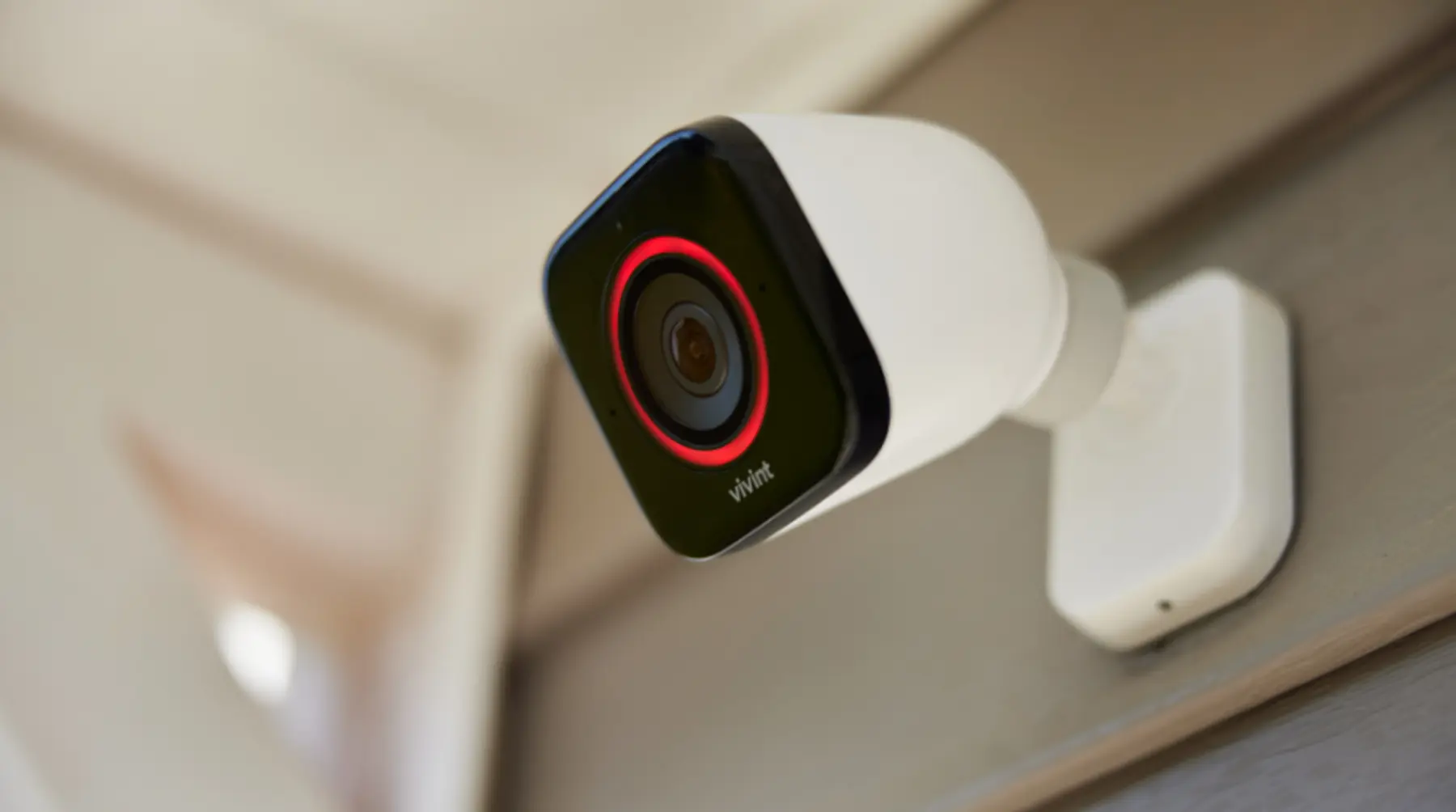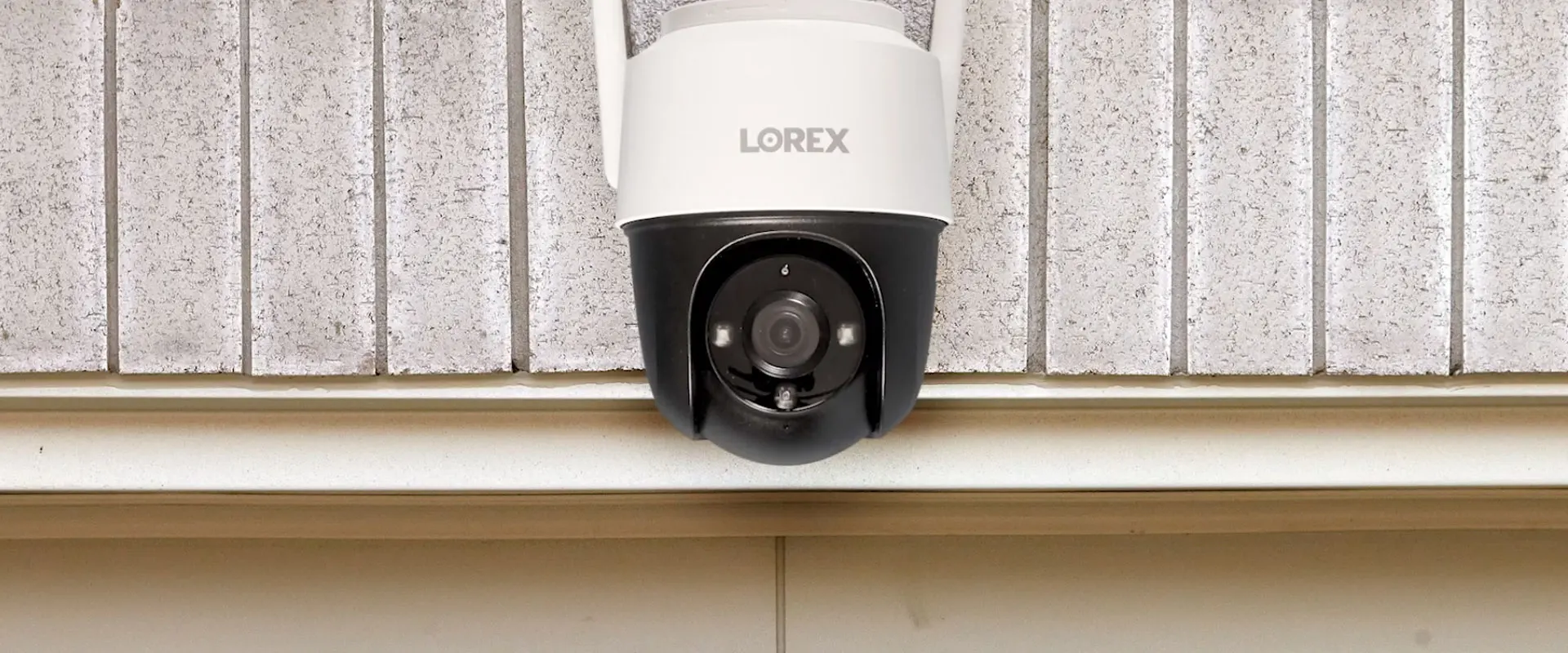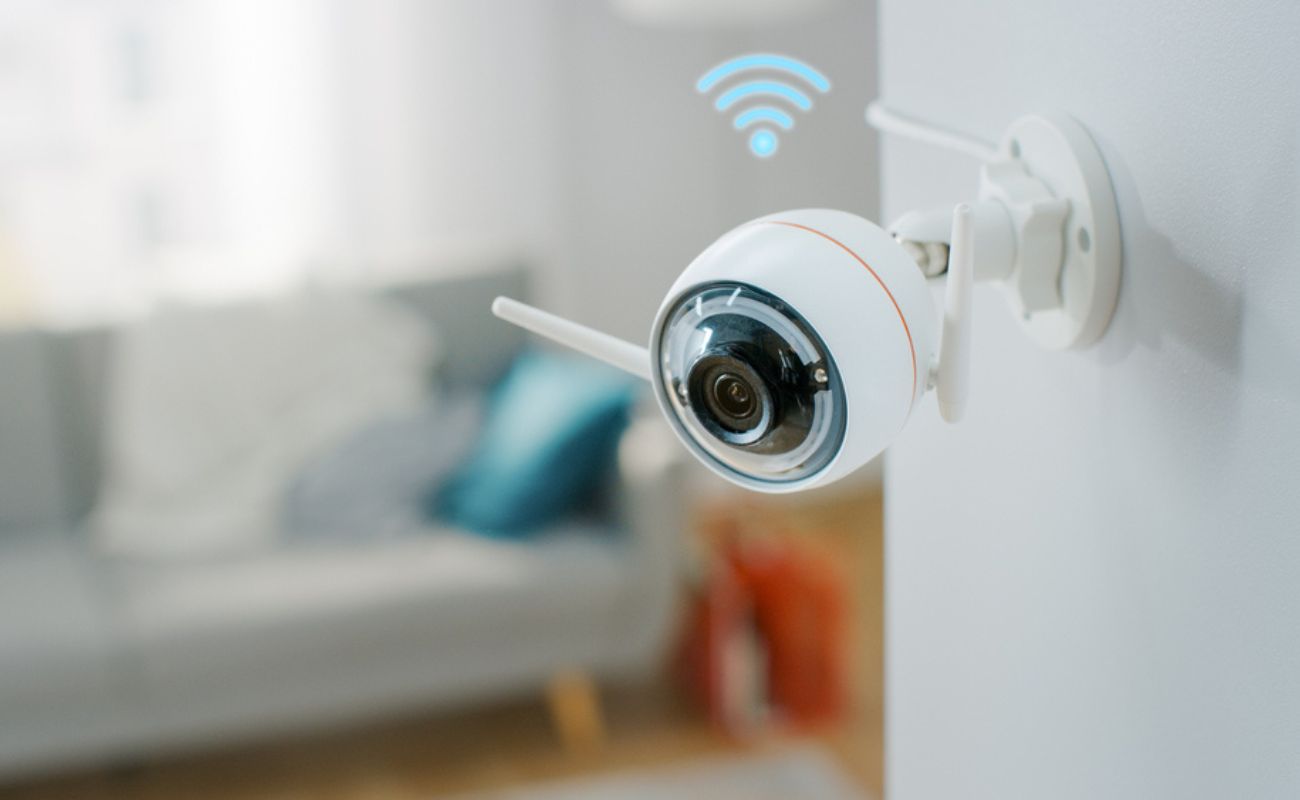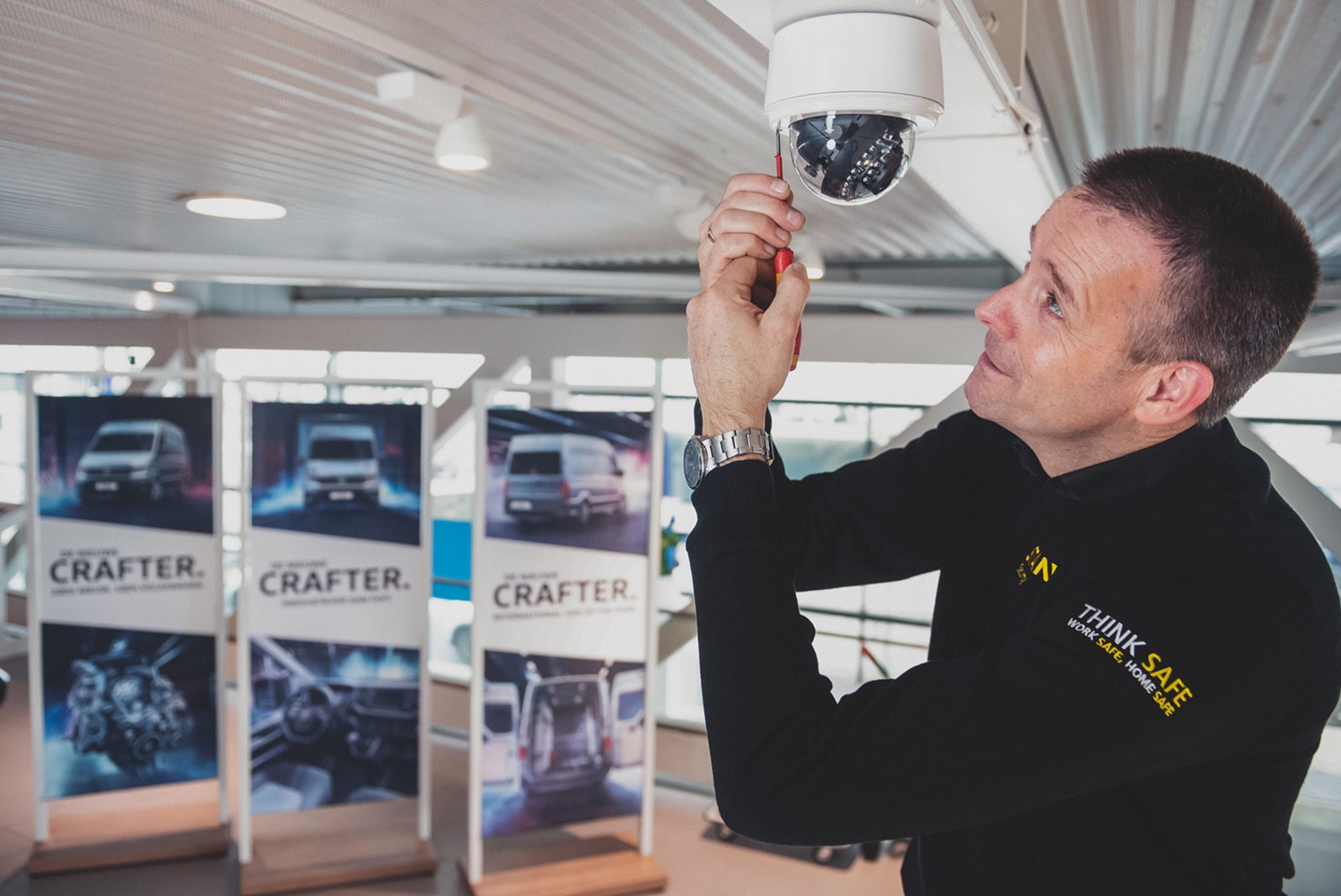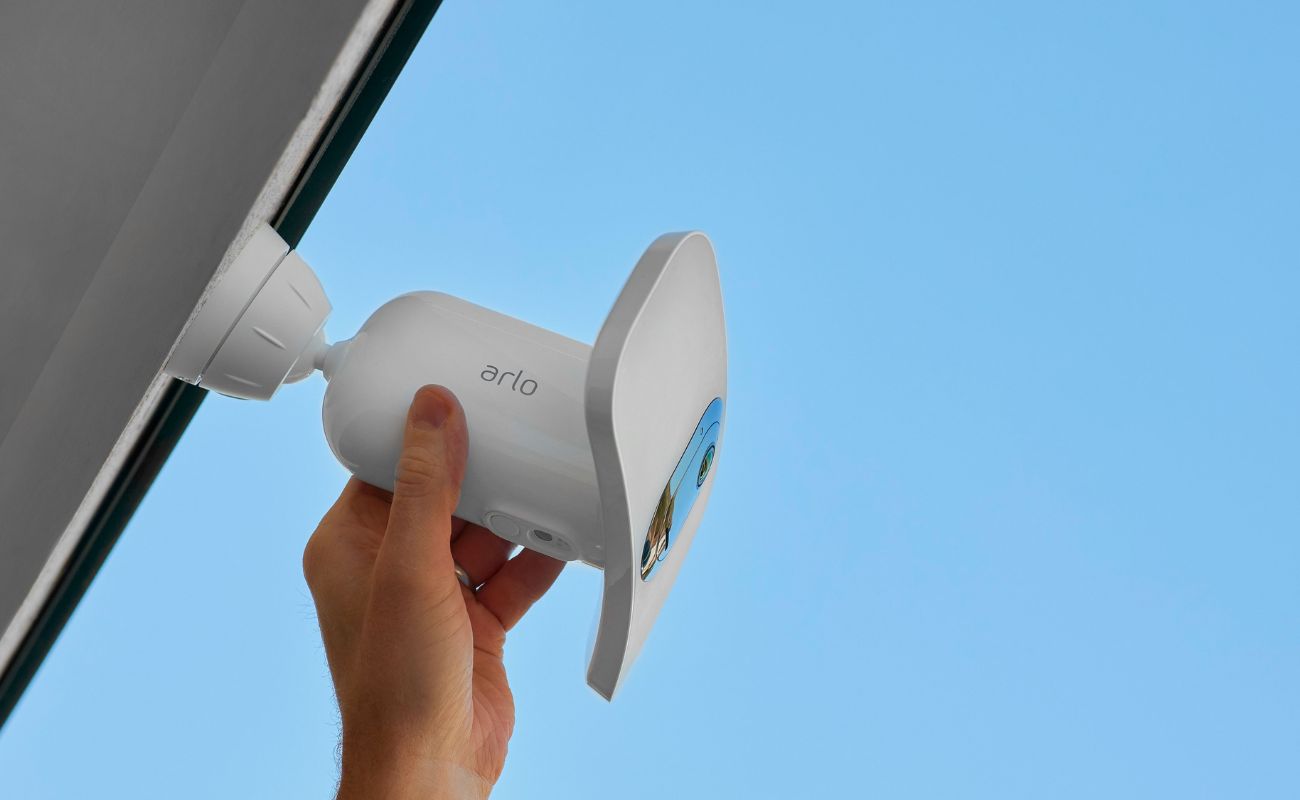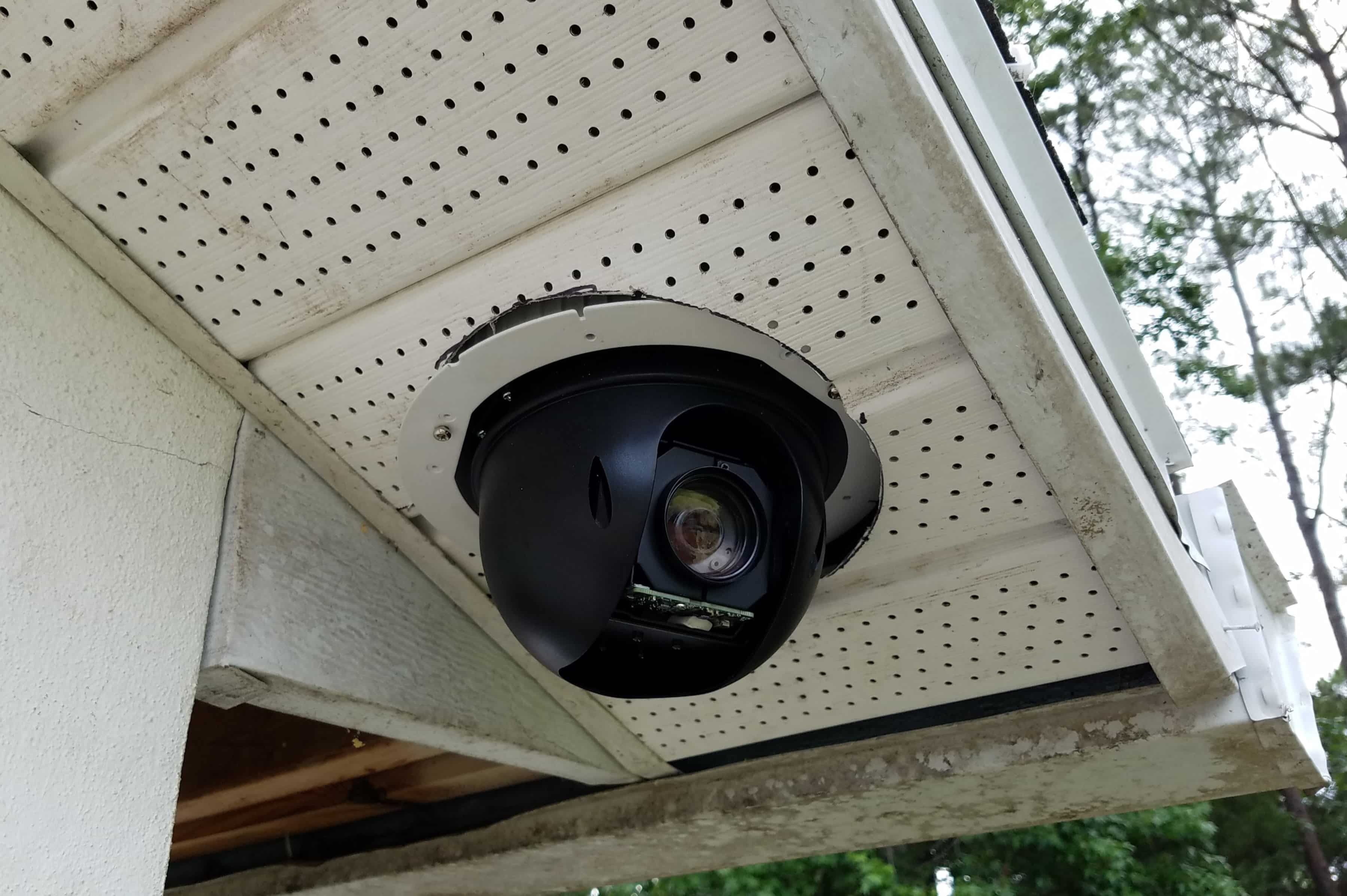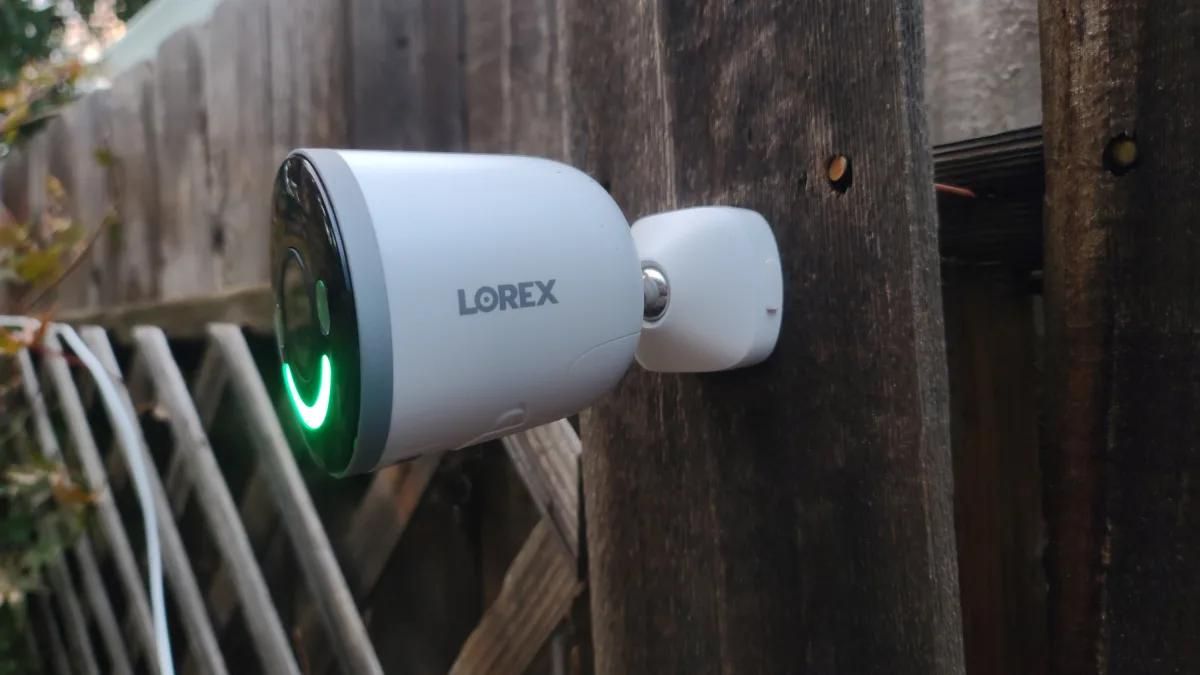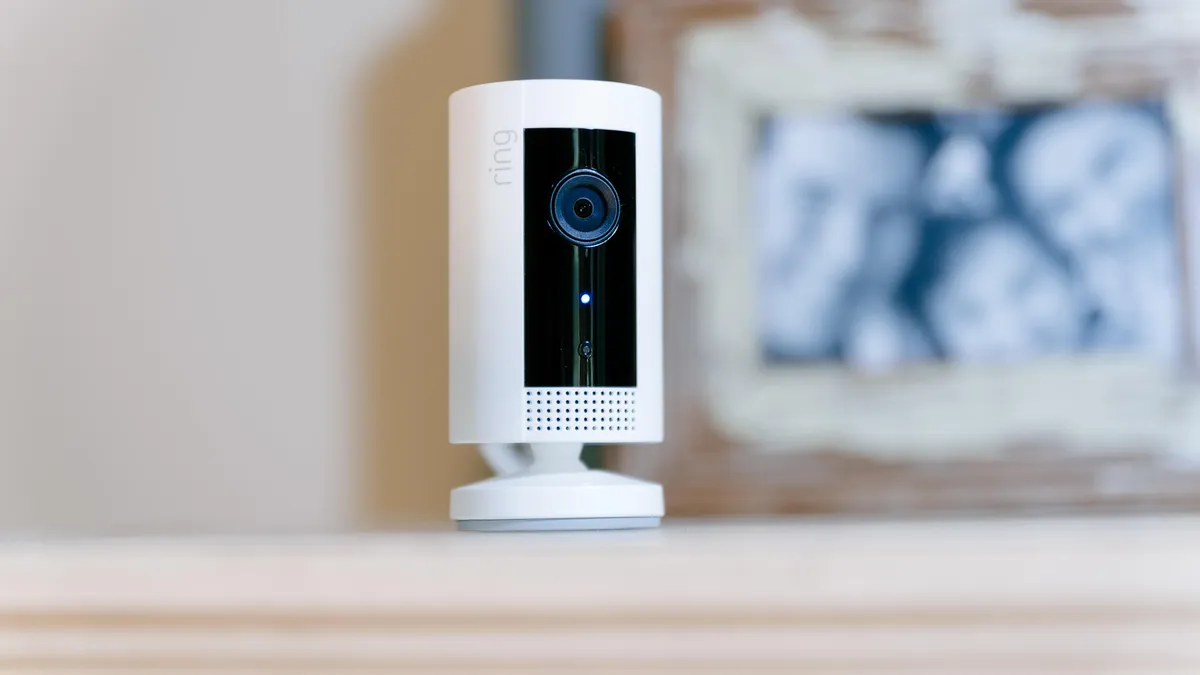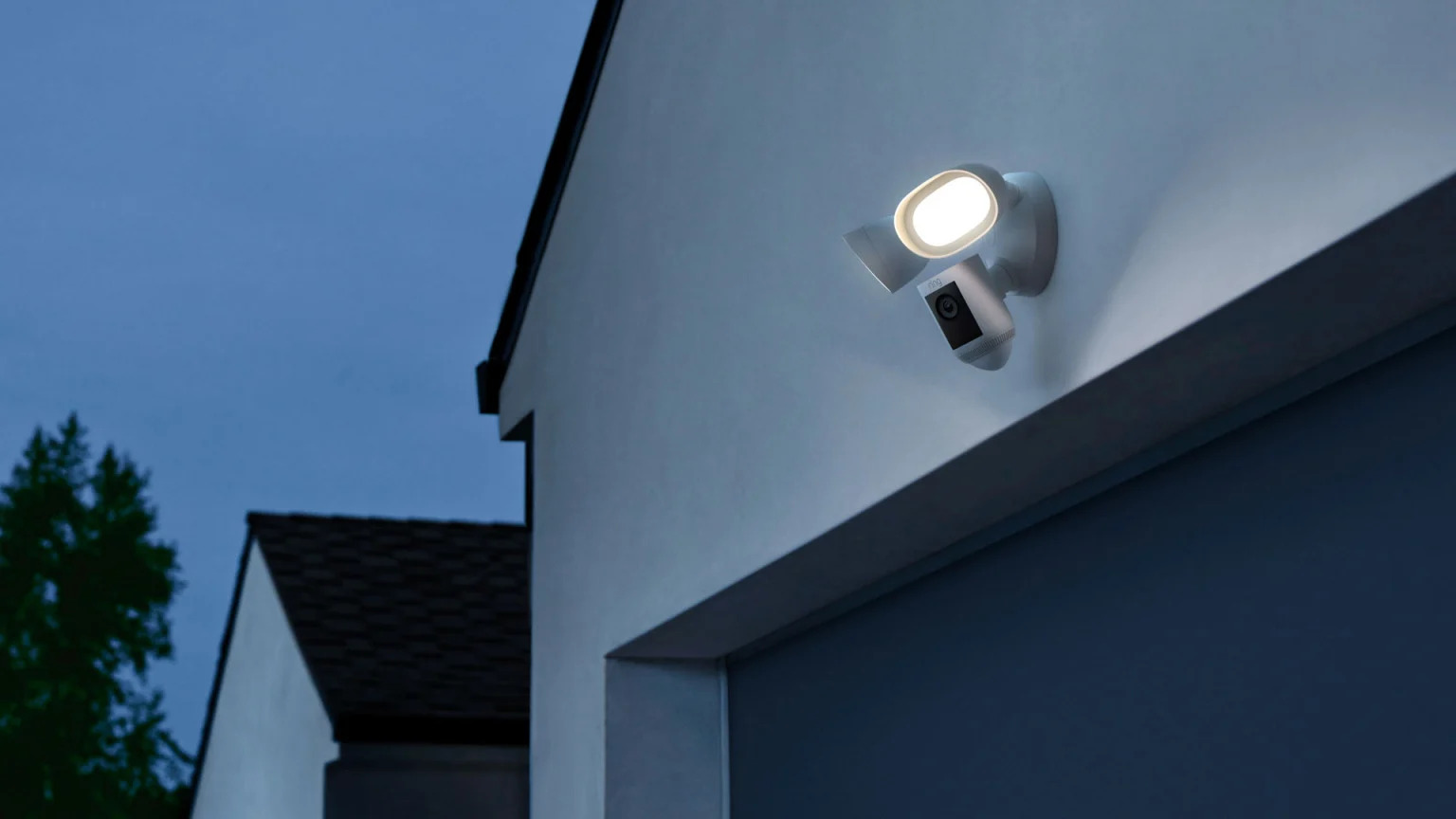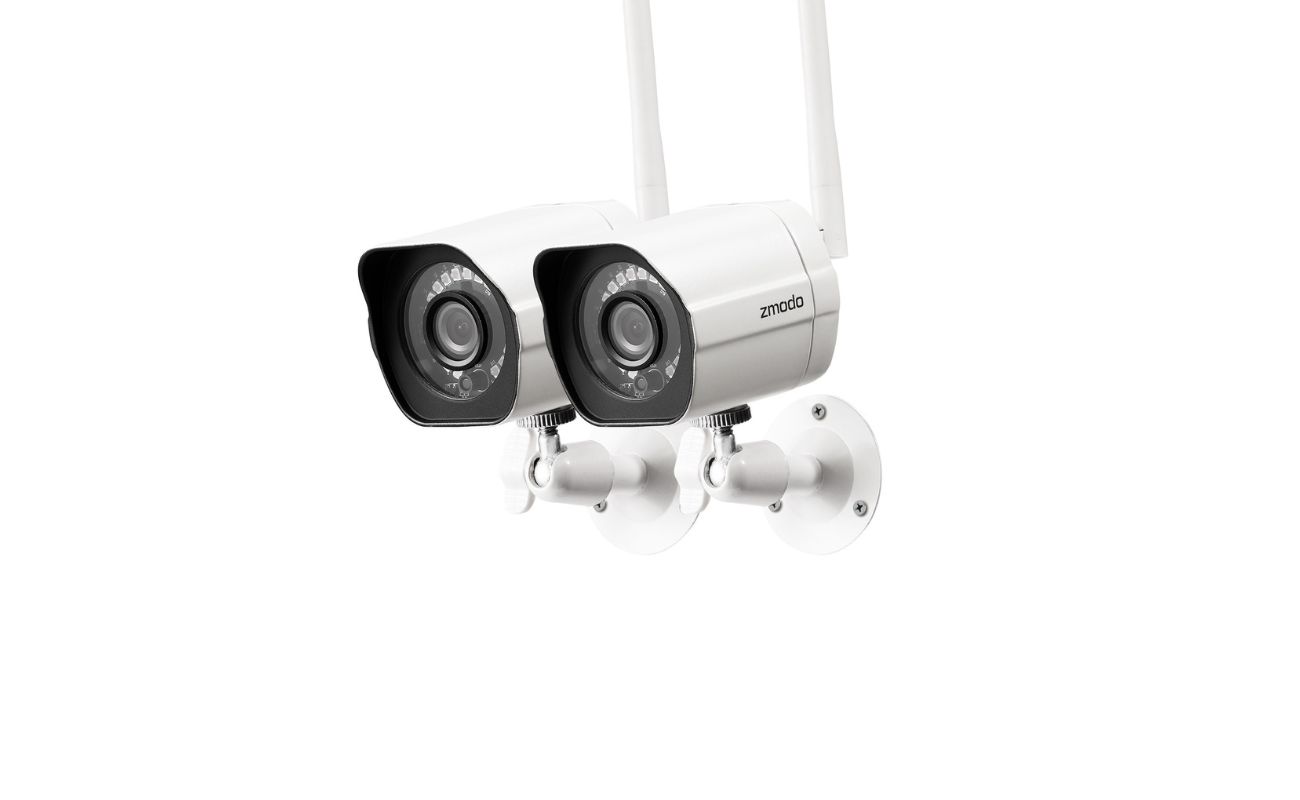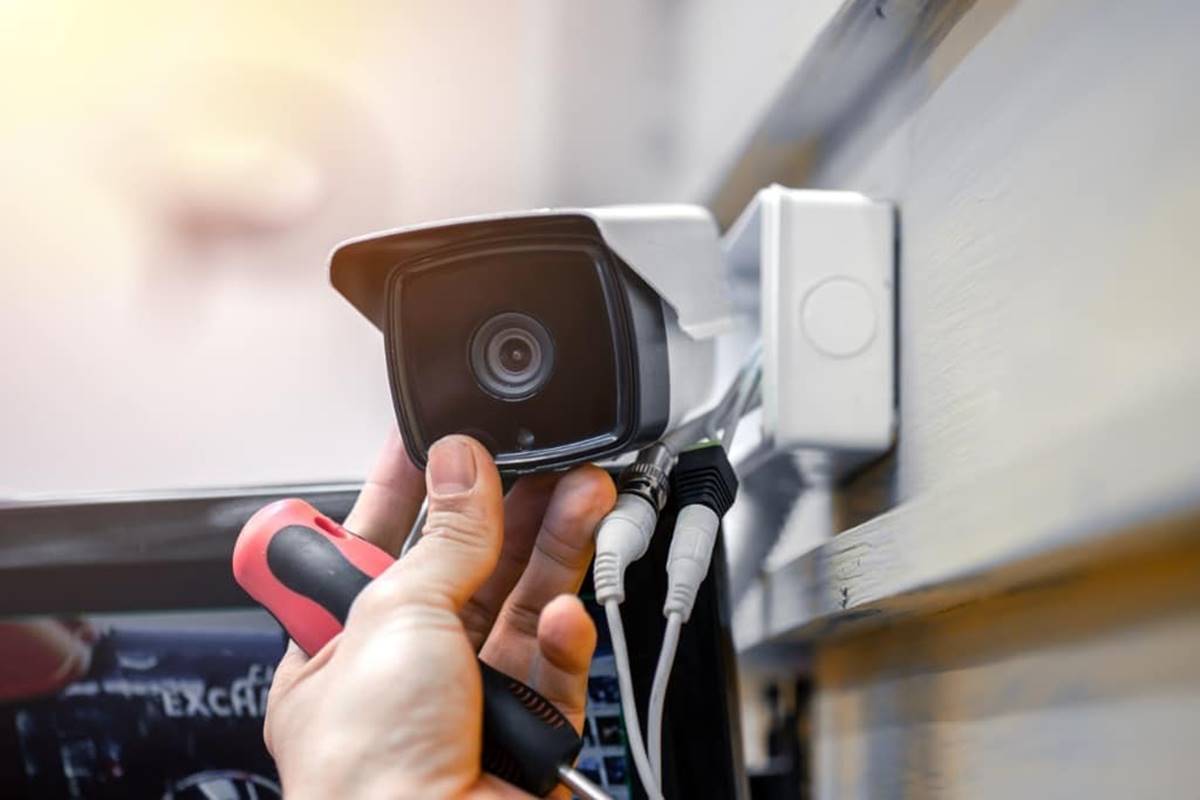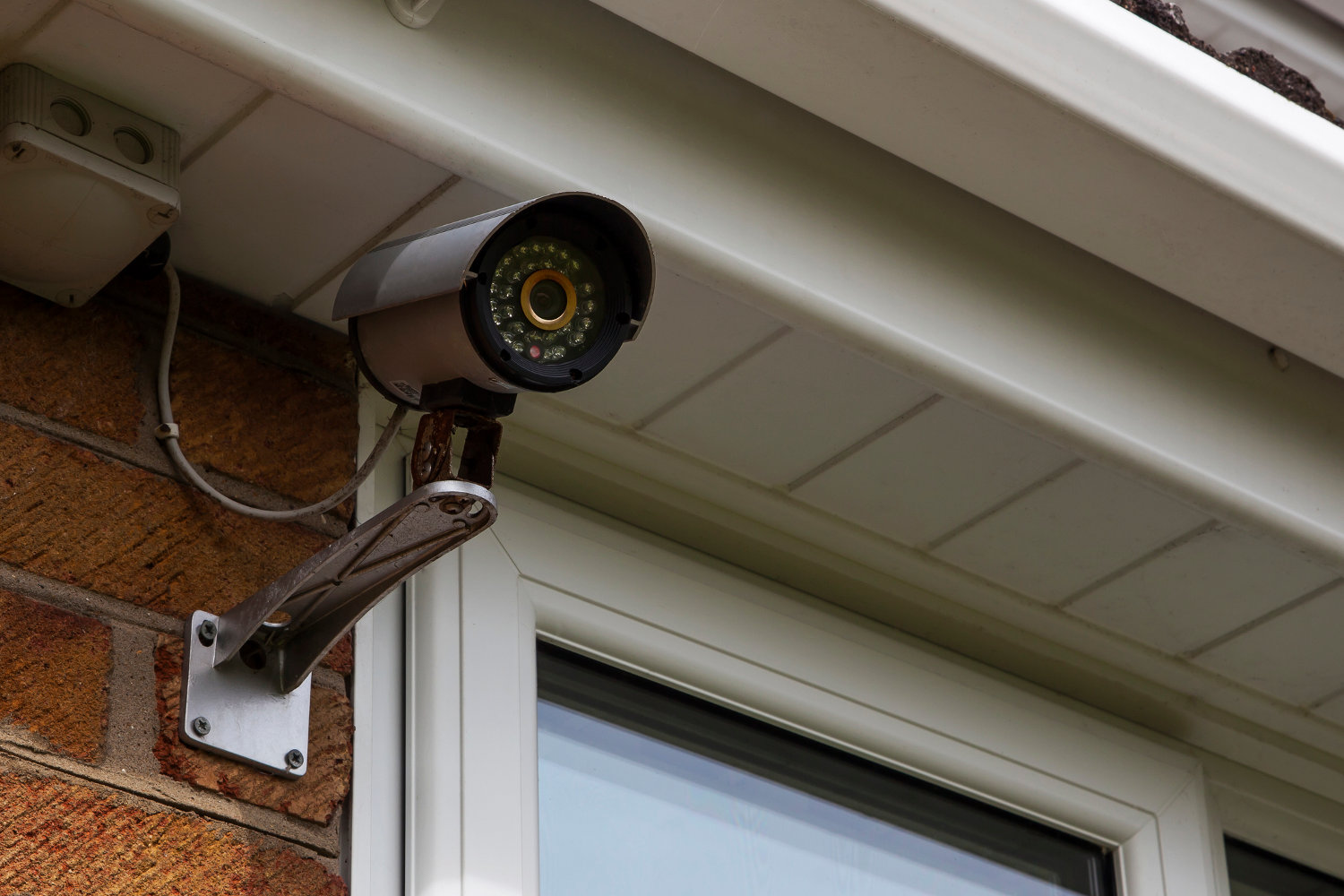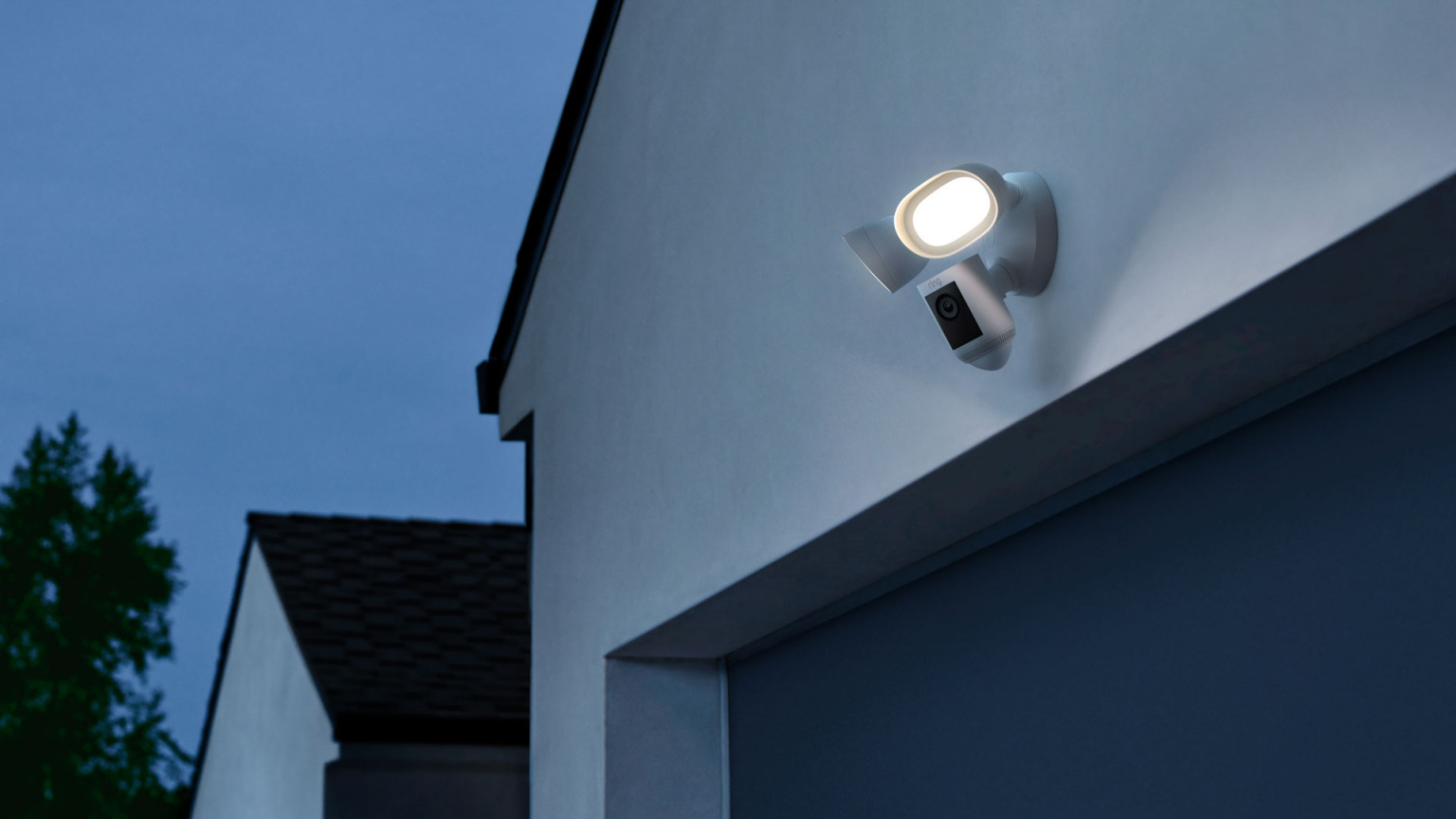Home>Home Security and Surveillance>How To Install Security Cameras Outside
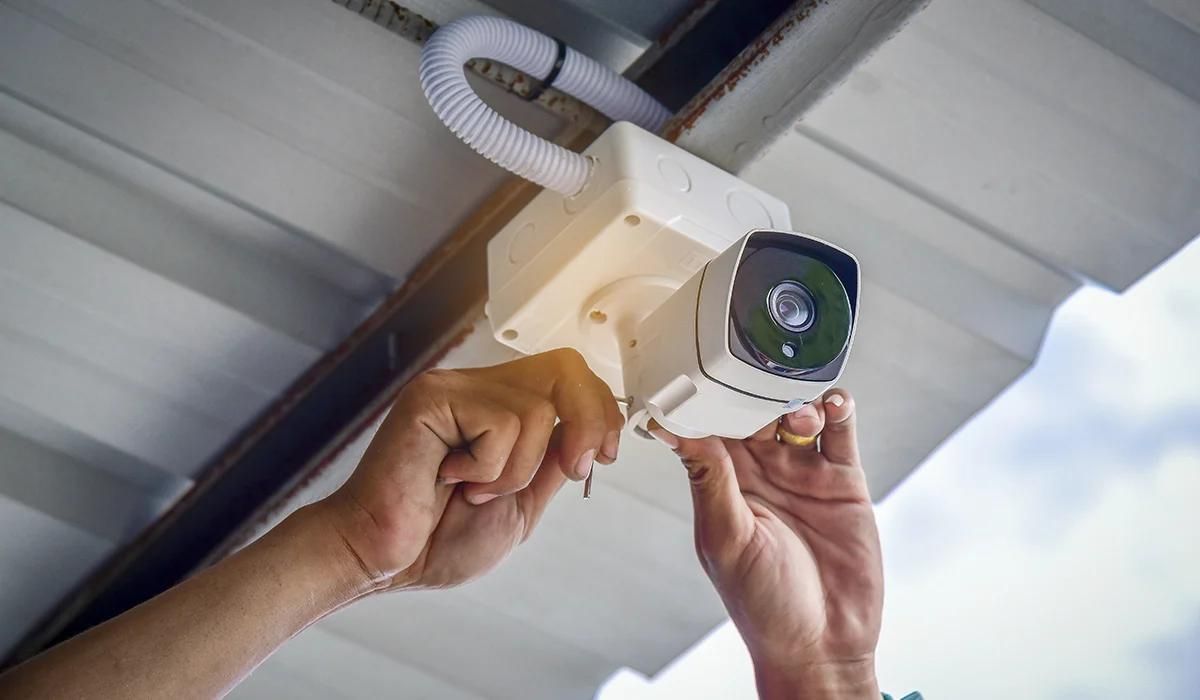

Home Security and Surveillance
How To Install Security Cameras Outside
Modified: March 6, 2024
Learn how to install security cameras outside your home for enhanced home security and surveillance. Get step-by-step instructions and expert tips.
(Many of the links in this article redirect to a specific reviewed product. Your purchase of these products through affiliate links helps to generate commission for Storables.com, at no extra cost. Learn more)
Introduction
Home security is a top priority for every homeowner. With the advancements in technology, installing security cameras outside your home has become an effective way to protect your property and loved ones. Outdoor security cameras provide surveillance and peace of mind, allowing you to monitor your surroundings and deter potential intruders.
In this comprehensive guide, we will walk you through the step-by-step process of installing security cameras outside your home. From determining ideal camera locations to connecting them to the recording device, we will cover everything you need to know to set up an efficient and effective security camera system.
Before we dive into the installation process, it is important to note that investing in high-quality security cameras is crucial for obtaining clear and detailed footage. Additionally, ensuring the proper placement of the cameras is essential for maximizing their effectiveness. By following the guidelines and tips provided in this article, you can ensure that your outdoor security camera system is optimally set up.
So, let’s get started!
Key Takeaways:
- Choose high-resolution, weatherproof security cameras and strategically position them near entry points and high-value areas to maximize surveillance coverage and protect your property.
- Test your camera system thoroughly to ensure clear footage, motion detection, and night vision capabilities, providing enhanced security and peace of mind for your home.
Step 1: Determine the camera locations
Before you start installing your security cameras, it is important to carefully evaluate the layout of your property and determine the best locations for optimal coverage. Here are some factors to consider when choosing camera locations:
- Entry points: Identify the main entry points of your home, such as doors, windows, and garage entrances. Install cameras near these areas to capture any suspicious activity.
- Perimeter: Assess the perimeter of your property and identify vulnerable areas, such as blind spots or secluded corners. Placing cameras in these locations can help monitor and deter potential intruders.
- High-value areas: If you have valuable assets, such as a patio, pool, or expensive outdoor equipment, consider installing cameras to cover these areas. This will help protect your investments and deter theft.
- Lighting conditions: Take note of the lighting conditions in different areas of your property. Ensure that cameras placed in low-light areas have night vision capabilities and consider installing additional lighting to improve visibility.
- Obstructions: Identify any potential obstructions that could hinder the camera’s view, such as trees, bushes, or walls. Make sure to clear these obstacles or adjust the camera’s angle for an unobstructed view.
Once you have identified the locations, it is advisable to create a diagram or map of your property, marking the selected camera locations. This will help you during the installation process and ensure proper coverage.
Remember, the goal is to have comprehensive coverage of your property, so strategically placing cameras in key areas will provide the best surveillance and security.
Step 2: Choose the right security cameras
Choosing the right security cameras for your outdoor surveillance needs is crucial for obtaining high-quality footage and maximizing the effectiveness of your security system. Here are some factors to consider when selecting security cameras:
- Resolution: Opt for cameras with high-resolution capabilities, such as 1080p or higher. This ensures that the footage captured is clear and detailed, making it easier to identify individuals or incidents.
- Weather resistance: Since outdoor cameras are exposed to various weather conditions, make sure to choose cameras that are weatherproof and built to withstand elements like rain, snow, and extreme temperatures.
- Night vision: To ensure surveillance coverage throughout the day and night, select cameras with infrared or low-light vision capabilities. This will enable the cameras to capture clear footage even in low-light or dark conditions.
- Field of view: Consider the desired field of view for each camera location. Cameras with adjustable lenses or wide-angle capabilities can provide a broader coverage area, reducing the number of cameras needed.
- Power source: Decide whether you prefer wired cameras that require a power source or wireless cameras that run on batteries or solar power. Choose the option that best suits your needs and preferences.
- Additional features: There are various additional features available for security cameras, such as motion detection, two-way audio, and mobile app connectivity. Determine which features are essential for your security requirements.
Research different camera models and brands to find the best option that aligns with your budget and requirements. Read customer reviews and ratings to gain insights into the performance and reliability of the cameras.
Remember, investing in high-quality cameras is essential for obtaining clear and reliable footage that can help in identifying potential threats and providing evidence if any incidents occur.
Step 3: Gather the necessary tools and equipment
Before you start the installation process, it is important to gather all the necessary tools and equipment. Having the right tools on hand will ensure a smooth and efficient installation. Here is a list of commonly used tools and equipment:
- Security cameras: Ensure that you have all the required security cameras that you have chosen in Step 2.
- Mounting brackets: Depending on the type of security cameras, you may need mounting brackets to securely install them on walls, ceilings, or other surfaces. Make sure to have the appropriate brackets for each camera.
- Screws and anchors: These are essential for mounting the brackets to the desired locations. Choose screws and anchors suitable for the surface material, such as wood, concrete, or brick.
- Power cables: If you have opted for wired cameras, ensure that you have the necessary power cables of the right length to connect the cameras to a power source.
- Power supply: If your cameras do not come with a built-in power supply, make sure to have a dedicated power supply unit to connect and power the cameras.
- Cable clips or ties: These will help secure and organize the cables, preventing them from hanging loosely or becoming a tripping hazard.
- Drill and drill bits: A drill is necessary for creating holes in walls or surfaces to mount the brackets and pass the cables through. Ensure you have the appropriate drill bits for the type of material you are drilling into.
- Screwdriver: A screwdriver will be used to tighten the screws when mounting the brackets and securing the cameras.
- Ladder or step stool: Depending on the camera’s mounting height, you may need a ladder or step stool to reach the desired installation location safely.
- Mobile device or monitor: Prepare a mobile device or monitor to test and view the camera feed once the installation is complete.
Double-check that you have all the necessary tools and equipment to avoid any delays during the installation process.
Remember to always follow safety precautions when working with tools and equipment and take necessary steps to protect yourself and your property.
Step 4: Install the mounting brackets
Now that you have gathered all the necessary tools and equipment, it’s time to install the mounting brackets for your security cameras. Follow these steps to ensure a proper installation:
- Choose the mounting location: Refer to the camera locations you determined in Step 1. Use a pencil or marker to mark the exact spot where you will install the brackets.
- Prepare the surface: If you are installing the brackets on a wall, make sure the surface is clean and free from any debris. For other surfaces like ceilings or eaves, ensure they are stable and capable of supporting the weight of the cameras.
- Position and align the brackets: Hold the mounting brackets against the marked spot and use a level to ensure they are straight. Adjust their position and alignment if needed.
- Mark the screw holes: With the brackets held in place, use a pencil or marker to mark the screw holes on the surface. These marks will serve as guides when drilling.
- Drill the screw holes: Use a drill with the appropriate drill bit size to create holes at the marked spots. Ensure that the holes are deep enough to securely hold the screws and anchors.
- Insert anchors (if necessary): If you are installing the brackets on a surface that requires anchors, insert them into the drilled holes. Tap them gently with a hammer to ensure they are snugly fitted.
- Attach the brackets: Place the brackets over the drilled holes and align them with the screw holes. Insert the screws and tighten them using a screwdriver. Make sure the brackets are firmly attached to the surface.
Repeat the above steps for each camera location, ensuring that the mounting brackets are securely installed. Once the brackets are in place, you are ready to proceed to the next step.
It is important to follow the manufacturer’s instructions for installing the specific type of mounting brackets and cameras you are using, as the process may slightly differ.
Step 5: Mount the security cameras
Now that the mounting brackets are securely installed, it’s time to mount the security cameras onto them. Follow these steps to ensure a proper and stable camera installation:
- Attach the camera to the bracket: Depending on the type of camera and bracket, there may be various methods for attaching the camera. Follow the manufacturer’s instructions to securely attach the camera to the bracket.
- Adjust the camera angle: Once the camera is attached to the bracket, adjust its angle and position to ensure proper coverage of the desired area. Use a screwdriver or any provided adjustment mechanism to fine-tune the camera’s position.
- Tighten the camera screws: Make sure all screws on the camera and bracket are properly tightened. This will prevent the camera from moving or becoming loose over time.
- Test the stability: Gently shake or apply light pressure to the camera to check its stability. Ensure that it is securely mounted to the bracket and does not wobble or shift.
- Repeat for other cameras: If you have multiple cameras to install, repeat the above steps for each camera, ensuring they are mounted securely and positioned correctly.
When mounting the cameras, consider the height and angle of each camera to achieve optimal surveillance coverage. Align the cameras with the desired field of view and test the camera feed to ensure it captures the intended area.
Note that some cameras may have additional features like pan and tilt capabilities. Adjust these settings as needed to enhance the camera’s coverage area.
Once all the cameras are mounted, you are ready to move on to the next step and connect them to the power source.
Remember to handle the cameras with care, following any specific instructions provided by the manufacturer, to avoid damaging the equipment.
When installing security cameras outside, make sure to place them high enough to avoid tampering, but low enough to capture faces. Also, ensure they are weatherproof and have a clear line of sight.
Step 6: Connect the cameras to the power source
Now that your security cameras are securely mounted, it’s time to connect them to a power source. The method of power connection will depend on the type of cameras you have chosen. Follow these general steps:
- Locate the power input: Identify the power input port on each camera. This is usually located on the back or underside of the camera.
- Prepare the power cables: If your cameras require wired power connection, ensure that you have the appropriate power cables of the correct length. Measure the distance from the camera to the nearest power outlet and cut the cable accordingly.
- Connect the power cable: Insert one end of the power cable into the power input port of the camera. Ensure a secure connection, and if necessary, tighten any screws or connectors to hold the cable in place.
- Route the power cables: Carefully route the power cables from each camera to the nearest power outlet. Conceal the cables along walls, ceilings, or use cable clips to keep them organized and out of sight.
- Connect the power cable to the outlet: Plug the other end of the power cable into a nearby power outlet. Ensure a secure connection, and if necessary, use an extension cord or surge protector for additional reach and protection.
- Test the power connection: Once all the cameras are connected to the power source, verify that they receive power by checking for any indicator lights or displays on the cameras.
If you have chosen wireless cameras, they will have built-in batteries or may be powered by solar panels. Make sure to follow the specific instructions provided by the manufacturer to connect and charge the batteries or set up the solar panels.
Ensure that the power source you are using can support the total power requirements of all the connected cameras. Avoid overloading electrical circuits to prevent any electrical hazards.
With the cameras successfully connected to the power source, move on to the next step to connect them to the recording device.
Step 7: Connect the cameras to the recording device
Once your security cameras are powered up and ready, it’s time to connect them to a recording device. This will allow you to store and access the footage captured by the cameras. Follow these steps to connect your cameras to the recording device:
- Determine the type of recording device: Choose the type of recording device that best suits your needs. It can be a digital video recorder (DVR), network video recorder (NVR), or a computer with video recording software.
- Locate the video output port on each camera: Find the video output port on your cameras. This is typically an RCA or HDMI port located on the back or side of the camera.
- Prepare the necessary cables: Depending on the type of recording device you have chosen, you will need the appropriate cables to connect the cameras. This may include RCA cables, HDMI cables, or Ethernet cables.
- Connect the cameras to the recording device: Connect one end of the cable to the video output port on each camera, and the other end to the corresponding video input port on the recording device.
- Configure the recording device: Follow the manufacturer’s instructions to set up and configure the recording device. This may involve connecting it to a monitor or TV, configuring network settings, and setting up storage options.
- Test the camera feed: With the cameras and recording device connected, test the camera feed on your monitor or TV to ensure that the footage is being captured and displayed correctly.
- Configure the recording settings: Access the recording device’s settings menu to configure video recording settings such as resolution, frame rate, and motion detection. Adjust these settings according to your preferences and storage capacity.
Ensure that all connections are secure and properly tightened to avoid any signal loss or interruptions. If you encounter any issues with the camera feed or recording device setup, consult the user manuals or contact customer support for assistance.
By connecting your cameras to a recording device, you can effectively record and store surveillance footage, enabling you to review and analyze any incidents or events captured by the cameras.
With your cameras successfully connected to the recording device, you are ready to move on to the next step and fine-tune their angles and positions.
Step 8: Adjust and aim the cameras
Now that your security cameras are installed and connected, it’s important to adjust and aim them properly to ensure optimal surveillance coverage. Follow these steps to adjust and aim your cameras:
- Access the camera feed: Use your mobile device, monitor, or the viewing interface of the recording device to access the camera feed. This will allow you to see the live view from each camera.
- Check the camera angles: Assess the camera angles and overall viewing perspective. Ensure that the cameras are positioned correctly and are capturing the intended areas without obstructions.
- Move and adjust as needed: If you find that a camera’s angle or position is not ideal, carefully move and adjust the camera. Use the brackets or mounts to modify the camera’s angle, tilt, or rotation.
- Test the camera coverage: Walk around your property and test the camera coverage in various areas. Look for any blind spots or areas that may need additional coverage. Make adjustments to the camera positions accordingly.
- Consider camera settings: Review the camera settings, such as motion detection sensitivity or zoom capabilities. Adjust these settings as needed to enhance the camera’s monitoring capabilities.
- Ensure clear view and focus: Make sure the camera lenses are clean and free from any dirt or debris that could obstruct the view. Use a soft cloth or lens cleaner to clean the lenses if necessary.
- Verify camera angles at different times: Check the camera angles and visibility during different times of the day and night. Ensure that changes in lighting conditions do not affect the camera’s ability to capture clear footage.
It is important to spend time adjusting and aiming the cameras to achieve the best surveillance coverage. This will help you capture clear and useful footage in case of any incidents or events.
Remember to consider the privacy and legal concerns when adjusting the angles of your cameras. Avoid capturing neighboring properties or private areas to respect privacy rights.
Once you are satisfied with the camera positions and angles, you are ready to move on to the final step and test your camera system.
Read more: Who Installs Security Cameras
Step 9: Test the camera system
After completing the installation and setup process, it’s important to thoroughly test your camera system to ensure its functionality and effectiveness. Follow these steps to test your camera system:
- Review camera feeds: Monitor the camera feeds on your mobile device, monitor, or the viewing interface of the recording device. Ensure that all cameras are displaying a clear and stable video feed.
- Check for coverage gaps: Walk around your property and carefully observe the camera feeds. Look for any blind spots or areas where the camera coverage is inadequate. Make note of these areas for further adjustments if needed.
- Test motion detection: Walk or move within the camera’s field of view to trigger the motion detection feature. Verify that the camera properly detects and records any motion or activity that occurs within its range.
- Test night vision: Test the night vision capabilities of the cameras by checking the camera feeds in low-light or dark conditions. Ensure that the cameras capture clear footage and provide sufficient visibility during nighttime.
- Verify recording and storage: Confirm that the cameras are successfully recording and storing the footage on the recording device. Review the playback function to ensure that recorded videos can be accessed and viewed without any issues.
- Check remote access: If your camera system supports remote access, test this functionality by accessing the camera feeds or recorded footage from a remote location using your mobile device or computer.
- Test alerts and notifications: If your cameras are equipped with motion detection alerts or notifications, intentionally trigger the motion detection and verify that you receive the alerts as expected.
Thoroughly testing your camera system will ensure that it is functioning correctly and meeting your security needs. By identifying any issues or deficiencies during the testing phase, you can make the necessary adjustments or seek support from the manufacturer or professional installers.
Remember to regularly test and maintain your camera system to ensure its continued performance and reliability. This may include cleaning camera lenses, checking connections, and updating firmware or software as needed.
Congratulations! Your camera system is now fully installed, configured, and tested, providing you with enhanced security and peace of mind for your home.
Conclusion
Installing security cameras outside your home is a proactive and effective measure to enhance the security and surveillance of your property. By following the step-by-step guide outlined in this article, you have learned how to install, set up, and optimize your outdoor camera system.
We started by emphasizing the importance of choosing the right security cameras that align with your needs, considering factors like resolution, weather resistance, night vision, and additional features. We then guided you through the process of determining camera locations, selecting suitable mounting brackets, and properly installing them on your property.
Next, we covered the crucial steps of connecting the cameras to a power source and a recording device, ensuring that you can access the live feed and store recorded footage for future reference. We emphasized the importance of adjusting and aiming the cameras to achieve optimal surveillance coverage and provided tips for testing the functionality of the entire camera system.
Remember, maintaining and regularly testing your camera system is key to ensuring its continued effectiveness. Clean camera lenses, secure connections, and software updates will help keep your system running smoothly.
With your newly installed outdoor camera system, you can enjoy enhanced security, deter potential intruders, and monitor your property with peace of mind. Always be mindful of local laws and regulations regarding the use of security cameras, respecting the privacy of others.
Stay vigilant, stay safe, and enjoy the added security and peace of mind that your outdoor security cameras provide!
Frequently Asked Questions about How To Install Security Cameras Outside
Was this page helpful?
At Storables.com, we guarantee accurate and reliable information. Our content, validated by Expert Board Contributors, is crafted following stringent Editorial Policies. We're committed to providing you with well-researched, expert-backed insights for all your informational needs.
